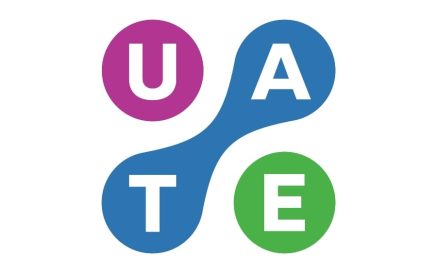«Orphans of Genocide»- is the title of a new volume by tireless Genocide scholar and historian Ara Ketibian, who is the author of the series titled “The Armenian Genocide: Prelude and Aftermath as reported in the U.S. Press”. This is his 11th volume on the subject of Genocide.
In the period 1890-1922, the American press, including leading daily newspapers The New York Times, The Boston Globe, The Christian Science Monitor, The Washington Post, The Los Angeles Times, The Chicago Tribune, have reported about and documented the details of the Genocide of Armenians that was being committed in Ottoman Turkey.
The book’s title, Orphans of Genocide, speaks for itself. When you get acquainted with the factual material, you learn that eighty percent of those orphans were ethnic Armenians. Of course, there were also many Greeks and Assyrians…
Since the 1894-1896 Hamidian Massacres, Turkish policy has remained unchanged, and is repeated today with the blockade of Artsakh…
Read also
Basing his research exclusively on facts, Ara Ketibian says: “During the Hamidian massacres of 1894-1896, the Ottoman Empire isolated the territories so that no one could enter or leave those areas. They even banned travel for journalists, foreign diplomats and consular representatives so that there wouldn’t be any witnesses. This is why the news was late in reaching the American newspapers of the time. The events that took place in 1894-1896 were only widely covered in the press in 1896-1897, while in the previous two years there were very few mentions of them in the media.”
Speaking about the fundraising campaigns organized by the U.S., a country that worked to promote and spread democracy back in the 1900s, Ara Ketibian mentions as examples the orphanages established by Americans in the Middle East, throughout Turkey, including Constantinople, in Eastern Bulgaria, and after 1922 in Greece, as well as in Armenia: in Alexandropol, Karakilisa-Vanadzor, and in Dilijan, where they established an institution for children suffering with trachoma… The largest of these was the orphanage in Alexandropol. The orphans of the Genocide – children gathered from mountains, roadsides, forests and various other places – were so ill and starved that they had to be fed drop by drop with a special diet under the supervision of doctors…
In the preface to his book, the author mentions a little boy, who was found starved and barefoot and brought to the orphanage hospital. “The child cried all the time, refused all food and only begged the nurses and doctors for bread. Bread, I want some bread… When told that he couldn’t eat bread just then, he said: I don’t want to eat it, I want to keep it so I know I have some bread”.
This is just one example of the children’s terrible psychological condition… Similarly, the children would not put on the shoes given to them in the orphanage, and when their caretakers asked why they weren’t wearing their shoes, they said that they were keeping them for the long road ahead…
By the way, alongside nutritionists, there were also psychologists working in the orphanages of that time, trying to help the children play, or rather, teaching them how to play, because the Armenian orphans, who had forgotten their own names, did not even know how to play: they had never played before…
Dr. Martin Niepage, a German teacher at the Realschule in Aleppo in 1913-1916, wrote in a letter to the German MFA that he was ashamed of the crimes committed by his own nation. In those days, leading American newspapers published a story by Dr. Niepage citing the German Consul at Mosul, who told in his presence that on the way from Mosul to Aleppo he had in many places seen such quantities of chopped off hands of little children that the streets might have been paved with them.
Dr. Niepage also mentions a little girl whose both hands were chopped off, meaning that the Turks not only massacred or exiled but also tortured Armenian children, and did it on purpose.
Many such episodes can be also found in another volume in the series titled Forced Conversions in Ottoman Turkey: Reports from The U.S. Press (1895-1920).
In the preface to this latest volume, Ara Ketibian makes also mention of a Turkish woman, Halide Edip Hanum Advar. She was a graduate of the American school for girls in Constantinople and she first came across as an intellectual who adhered to Western progressive values, so that Americans even wanted to invite her to the U.S. as a guest speaker, but in reality, she was a close associate of the Young Turk leaders and was responsible for the Turkification of Armenian children. It was one of her Armenian school friends, Aghavni Yeghenyan, who exposed her, revealing the truth about her. Aghavni told the newspapers that this woman, pretending to be full of Western ideas, was in fact a terrible person: “So this little woman who so often boasts of her American ideals of womanhood and of which her Western friends make so much, after calmly planning with her associate forms of human tortures for Armenian mothers and young women, undertook the task of making Turks of their orphaned children.” In a newspaper story titled “The Turkish Joan of Arc”, Yeghenyan wrote: “I do not recommend inviting her to the U.S.”
In the words of American philanthropist Mrs. Cabot Stevens: “The Turkish government has used every means to wipe out childhood.’’ This quote comes from Genocide researcher Ara Ketibian’s latest book, Orphans of Genocide, based on publications in the U.S. press. However, the American people had no idea of the extent of suffering the Armenian orphans had gone through before settling in the orphanages founded by Americans. According to one newspaper story, as orphans aged one to three queued for food, they could barely stand up, leaning on each other – one wrong move and they would fall down…
In those days, a typical sight in the streets of Yerevan and Alexandropol were the orphans of Genocide leaning against the walls, half-dead children who had lost all ties with life and were waiting to die.
According to the 1920-1922 American press, by the end of 1922, 1 million 250 thousand Christians remained in the Middle East, whereas before the World War I, there had been three and a half million… In the American orphanages in Turkey alone, there were 110,000 orphans. 90,000 Christian children had been forcibly converted to Islam. Altogether, Genocide orphans numbered over 400,000, and the overall number of orphanages reached 125. Among these orphans, 80 percent were Armenians.
According to stories published in the American press, Armenian girls who ended up in harems had a very hard time. Let us just quote from one of these stories that reveals the threats the Turks used when keeping the girls in their captivity:
“For example, some hot-headed Armenian youths entered the homes of Turks where Armenian girls were kept. Of course, they would not enter any house at random, they would find out in which houses the captive Armenians were held. However, since the Turks threatened to kill anyone who admits to being Armenian, the girls had to pretend to be Turks.”
There were many cases when captive Armenian women killed the babies they had by Turks because they considered it a disgrace to bear a child by a Turk. The book also mentions numerous press reports dealing with adoptions. The American press in addition to publishing calls for fundraising for the purpose of the upkeep of children in orphanages, it reported about adoptions. When orphans were given up for adoption, one had to be 100 percent sure that the parents were dead. Still, there were cases when a child was adopted and then the parents turned up.
Ara Ketibian recounts one notable incident: “A girl who was born around 1919-1920 lost her parents during the deportation and was dying when she was found. The American doctor who treated her had no hope that she would survive. But… the girl got better and eventually recovered. The doctor’s wife became so fond of the Armenian girl that the couple decided to adopt her. Later, the girl’s parents turned up and visited their daughter, but then told the American couple, “Better let her stay with you because with us, she has no future.” According to Ketibian, this Armenian girl later married an American, had children and grandchildren, and died in 2009 at the age of 90…
These stories of kindness prove that at that time, America was a truly democratic and humanistic nation. Moreover, the American people believed it right to keep the Armenian orphans in orphanages so that they would not lose touch with their culture and relatives. Funds were raised for the upkeep of the orphans: five dollars for food and another five for clothing per orphan per month. The fundraisers were held in all the U.S. states, in many cities…
Frank L. Brown, General Secretary of the World Sunday School Association, wrote: “Some of America’s Sunday school leaders went to the Near East last year… These men personally helped to distribute the shipload of supplies of all kinds sent over as the result of gifts from America. They saw orphan children, of Armenian, Syrian, Jewish, Greek and Persian parentage, many of whom had suffered so that they had forgotten their own names.” In the orphanages, these children were called Axorian – “the children of exile”.
Stories in American press tell us that Americans were horrified by the predicament of the orphans, including the terrible tattoos made by Turks on the bodies of Armenian orphans who survived the Genocide. This is also mentioned in the preface to the book. Ketibian says: “When the children arrived in the USA, many of them had tattoos, and the Americans were horrified when they saw them, because until then, they had only read in the newspapers about the atrocities of the Turks. The American people extended help to the Armenians, but no matter how much information they got about the massacres, they could not actually imagine what the Turks had done. I think that seeing with one’s own eyes what happened to Armenian women and children and becoming involved in their lives significantly changed the attitude of Americans. Newspapers also reported that many women, upon reaching the USA, burned their faces trying to get rid of the tattoos…”
The American newspapers of the time also covered a remarkable story. It once happened that once a fire broke out in a Turkish neighborhood in Constantinople, where the houses were made of wood, and before help arrived, two hundred Armenian boys from an orphanage formed a human chain and put out the fire using buckets. Imagine, Armenian orphans putting out the fire to help the Turks, who had killed their parents and had left them orphans…
This is the difference in genetic makup!
Anahit Yesayan





























































